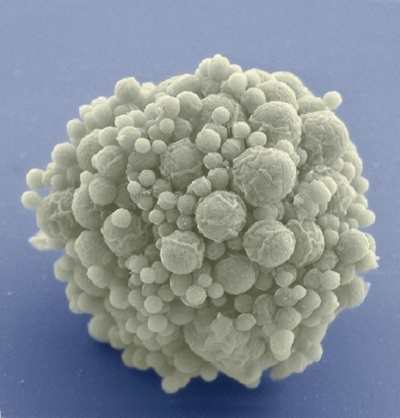Faced with a vast reduction in the bee population, what will our future society look like? Bees are indispensable for the pollination of the food we eat. This does not augur well for our future food supply. But human society is infinitely adaptable and with our fast moving technology we can expect that in the 5 to 10-year time frame, we shall see some striking new developments in the way of Artificial Intelligence, genetic manipulations and other new inventions. We list here some of possible options open to us:
1. Self-pollination
Plants, and in particular trees, have mostly evolved along the lines of cross-pollination with the help of bees, wasps, butterflies, bats, moths, birds and other animals. The basic reason for that is that cross breeding brings new genes into the hereditary system, thus making the species fitter, stronger to withstand climate change and more resistant to disease. There is also the possibility that mutations may bring in new variants with perhaps new advantages.
But self-pollinating plants do exist. These have evolved over the centuries under adverse conditions where there were no reliable agents for pollen transport –mostly this occurs for annual flowers and plants but also for trees. One example of self-pollination is Cleistogamy, which occurs before the flower opens. The pollen is released from the anther within the flower or the pollen on the anther goes down a tube from the style to the ovules. Most commonly this happens for certain types of orchids and grasses. But other plants resort to this strategy under adverse conditions when pollen does not appear. Quite often one finds a mixture of self-pollination and cross-pollination on different parts of the same plant.
Fortunately, today the use of genetic tools such as CRISPR allow us to target a specified segment of the DNA in a fast and relatively effortless way, it is conceivable that we can alter the genetic makeup of plants and trees through the seeds in such a way that they can all be self-pollinating. Grafting of young trees can produce self-pollination, but this is more labor intensive than genetically altering the seeds.
2. Pollination by Humans
Where bees are scarce, it is happening more and more that bees have to be transported from far away. For example, California is importing bees from Florida during the flowering season.
With the fast advance of robotics equipped with Artificial Intelligence –AI– much of the work presently done by humans such as assembly in car manufacturing, healthcare data analysis, legal document scanning, etc. will be done by robots. Our society will soon be faced with the problem of what to do with the potentially unemployed masses of people. Here is one solution: do like in China and use humans for cross pollination by means of brushes. This is already being done for many apple and pear orchards in Sichuan province. Apple and pear are very valuable crops at the top of the fruit chain. The scarcity of bees makes human pollination economically sensible. In particular humans can climb ladders to reach flowers where only hitherto bees can do. In Brazil, humans are used for pollinating the passion fruit.
3. Creation of New Insecticide Bacteria Harmless to Bees
It is well known that dioxyribonucleic acid, DNA, is the basis of the living cell. Its structure is a deceptively simple, yet beautiful double helix. Two strands of helix are tied together by pairs of molecular nucleobases. They are Adenine(A), Guanine(G), Cytosine(C) and Thymine(T), which pair up as four nucleobases: A with T and G with C. The sequence of these bases gives us the genetic hereditary information –the code which is passed on through reproduction.
The Human Genome Sequencing Consortium successfully decoded the human genome in 2003. It found that there are about 20,000 genes –functional units of DNA and altogether about 3 billion base pairs. To have mapped the size and locations of such a large and important system must rank as comparable in achievement as sending a man to the moon!
Since then, the scientists, given the knowledge and the technology gained, have diverged in two directions. A large group joined the NIH-National Institute of Health, to study the pathology of human disease, to diagnose and invent new drugs as well as in preventive medicine. Another group, led by J. Craig Venter, initiated a pioneering effort in a new venture –Synthetic Biology.
Synthetic Biology –Creation of new cells
In his recent book: Life at the speed of life, from the double helix to the dawn of digital life, Venter describes how to synthesize a new functional genome. The starting point is a most simple goat bacterium that is one million bases long. Using the 4 base chemicals A, T, G, and C from the laboratory, they synthesized and mimicked the complete genome of this bacterium. Having stored this in the computer, they then made minimal changes to the sequence, basically creating a new organism. This chemical was then injected into an empty host cell and the new bacterium proved to be an accurate enough version of the original goat bacterium that it was able to manufacture a specified sequence of proteins simply by following the instructions implicit in the structure of the synthesized DNA. After a 20-year quest, scientists led by Craig Venter in 2016 have finally synthesized a bacterium with a genetic code smaller than any known to exist in nature. It is a new organism with a minimum code necessary for life. The new microbe, named JCVI-syn3.0, has 473 genes, of these 149 genes have completely unknown functions. Now we have a living organism which does not do anything magical other than live, eat and self-replicate. But it is the first designer organism in history.

Given the recent advances in the tools for gene splicing such as CRISPR, the cost and time necessary for the creation of a programmable new organism have been much reduced, paving the way for a host of new applications. A good example of the useful application of the technology is in the flu vaccine. During the outbreak of the h7n9 flu epidemic in China, Chinese scientists sequenced the virus and posted it on the Internet. Given just the digital signal, scientists in the US was able to synthesize the virus within 10 hours and developed a vaccine towards it.
The whole field of synthetic biology opens up enormous and exciting possibilities. But as a responsible futurist we need to be aware of the bioethical implications. This brave new world we have ventured into can lead us to a utopia or a dystopia. The first question to ask is: “Can the bacteria we synthesize become a rogue species and run wild out of our control or can it be harnessed for society’s benefit?” Other questions include: “Who is to provide the regulations, to decide what needs to be developed and what should be forbidden?” Already society is grappling on the market with Genetically Modified Organisms –GMOs– while we do not fully understand all their functions and ramification?
It is conceivable we can synthesize, after maybe some trial and error, insecticide bacteria without the side effect of harming the bees.
4. Robot Bees
For a decade Harvard University Microrobotics Lab has been making robot bees. So far this Robobee has a 3 cm wingspan and only 80 milligrams. It can perch on a surface and take off again using electrostatic adhesion and it is fitted with some vision, optical flow and motion sensors. However, this Robobee is tied to a power source. Furthermore, in order for it to have a bee like resilience to sense the wind and adjust to the complex environment it would need a lot of computer AI software. Scientists at Cornell University are developing a ‘neuromorphic’ chip processor, which would mimic the large number of neurons in our neural network in the brain. It will also be fitted with new micro devices such as a camera, expanded antennae for tactile feedback, contact sensors on the robot’s feet and airflow sensors that look like tiny hairs.
So we can expect mini-robots equipped with AI to scan all plants for cross-pollination: trees, flowers, agricultural crops?
There is just one snag. There are 60,000 bees in a hive. Though only a fraction of them are foragers, the bee population is huge. How can we produce enough robot bees?
Conclusion
It is extremely sad that bees are disappearing at a catastrophically fast rate. They are still the most vital for pollinating the food we eat, the cotton clothes we wear, etc. They are truly irreplaceable even when we marvel at their attributes as insects –the fascinating way they communicate in the dances. Despite all the future options listed above, society would still do best to put its efforts on making sure bees survive by reducing the threats to them such as harmful insecticides. Surely this is within our power to do if only we realize how precious they are to us.
The above post is the third in a three-part series by Gioietta Kuo. If you missed it, Kuo’s first article introducing the social structure and communication system of bees can be found here, and the second article exploring the threats bees face can be found here. Read more in Part I and Part II.
Gioietta Kuo has MA at Cambridge, PhD in nuclear physics, Atlas Fellow at St Hilda’s College Oxford and many years research at Princeton. She has written many environmental articles for World Future Review, and in Chinese – People’s Daily, World Environment, Magazine for the Chinese Ministry of Environmental Protection. She has published more than 100 articles in American and European scientific professional journals. She can be reached at: koupet@comcast.net
The MAHB Blog is a venture of the Millennium Alliance for Humanity and the Biosphere. Questions should be directed to joan@mahbonline.org
MAHB Blog: https://mahb.stanford.edu/blog/future-bees/
The views and opinions expressed through the MAHB Website are those of the contributing authors and do not necessarily reflect an official position of the MAHB. The MAHB aims to share a range of perspectives and welcomes the discussions that they prompt.
